This past Saturday our group went to the Antique Market, Temple of Heaven, Pearl Market, and an acrobat show.
I have never experienced such humidity. Here’s a visual humidity barometer, taken right as I arrived at the Antique Market. Note the positioning of the people to get a sense of how much time elapsed.
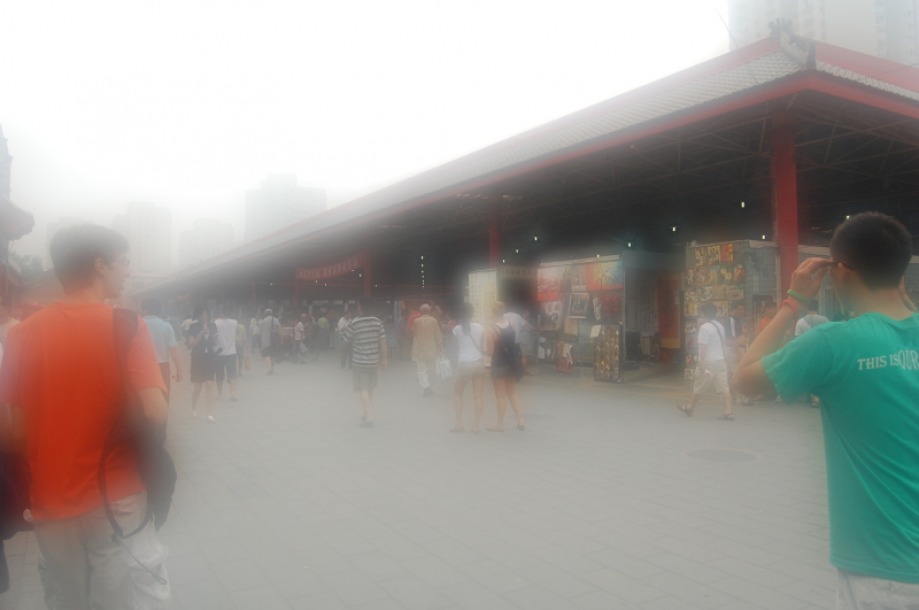
Thankfully, it soon rained, and I was able to resume taking pictures.
The Antique Market is very overwhelming. Too overwhelming, to the point where it might limit consumption. In Blink: The Power of Thinking Without Thinking, Malcolm Gladwell writes that shoppers, when allowed to taste only six types of jams, are 30% likely to buy a jam; once the jam flavors quadruples to twenty four, the shoppers are only 3% likely to buy. Too many choices can be a bad thing, especially if you do not know what you want. There were stalls filled with jewelry, rugs, weaponry, “antiques,” propaganda posters, replicas of Chinese contemporary art, clothing, books, and on and on.
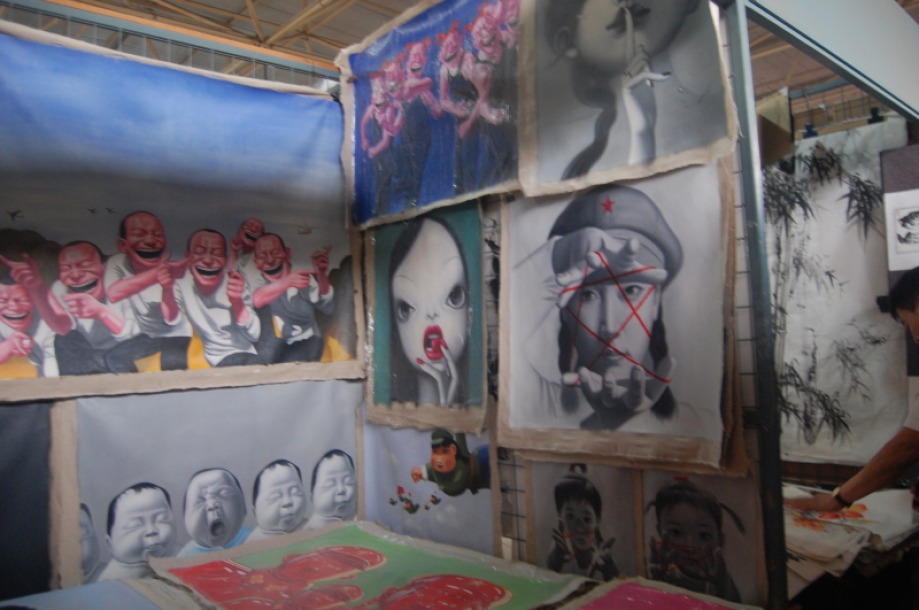
Chinese contemporary art
The one to the left is "by" Yue Minjun, a member of the Cynical Realist movement, “a label encapsulating the despair and hopelessness of this era” (29), as Barbara Pollack describes the group in the The Wild, Wild East: An American Art Critic’s Adventures in China. She writes:
“Fearing that I could be as narrow-minded as those French connoisseurs who dismissed abstract expressionism, I made a considerable effort to get to know Chinese contemporary art from the time I first saw it in the late 1990s, even before it became a hot commodity in the international art market. At the beginning, I spent a lot of time looking for the Chinese-ness in Chinese art, a criteria that has dogged this field for over three decades…. Yue Minjun made what I considered silly pictures of himself, multiplied many times over in a single work like a troop of Yue Minjuns, each with the same shit-eating grin on their face. I was told that this symbolized the aggressive narcissism of a generation brought up under the one-child policy. Were these works Chinese? And was that enough to redeem them even though they made such miserable first impressions?” (13-14)
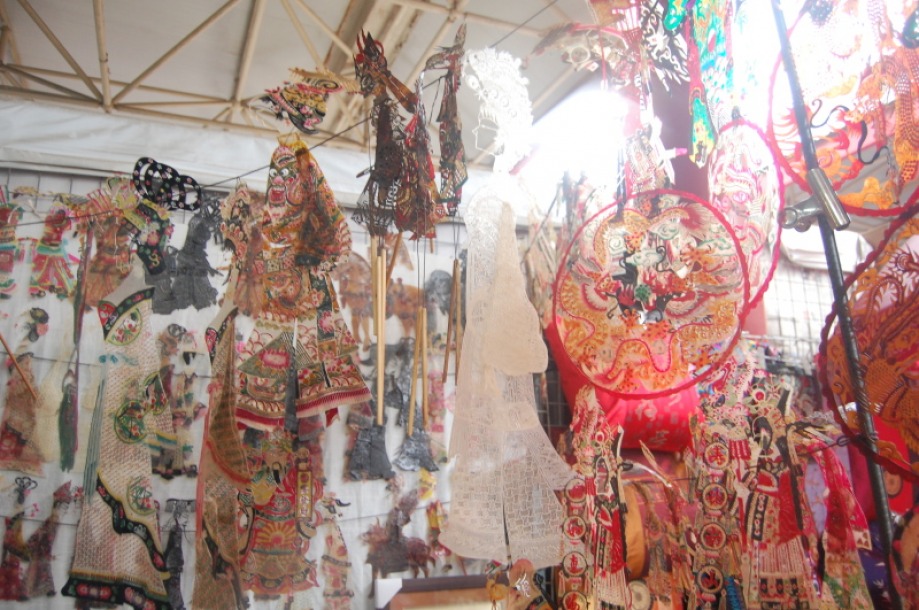
these are made from ox skin
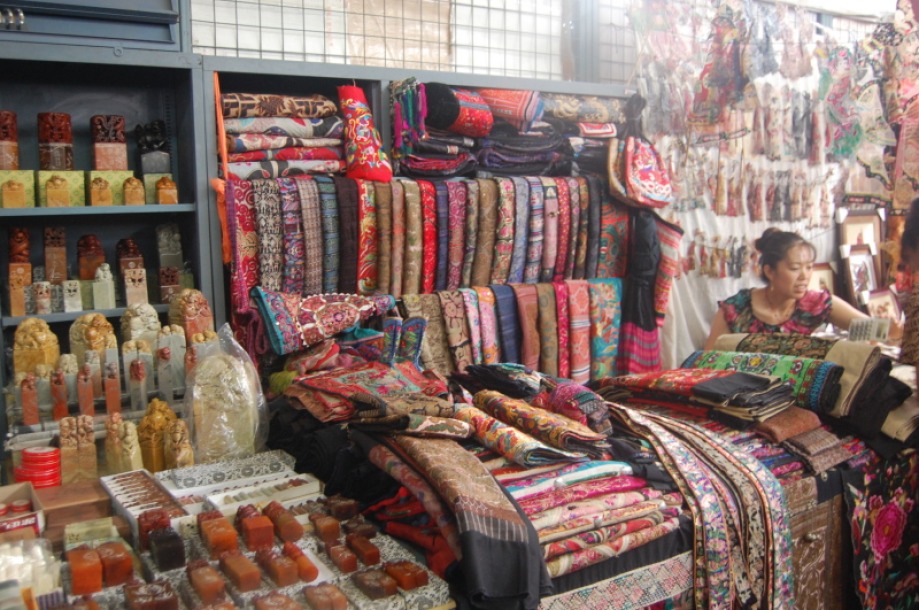
embroidered skirts, blankets, pillowcasees...
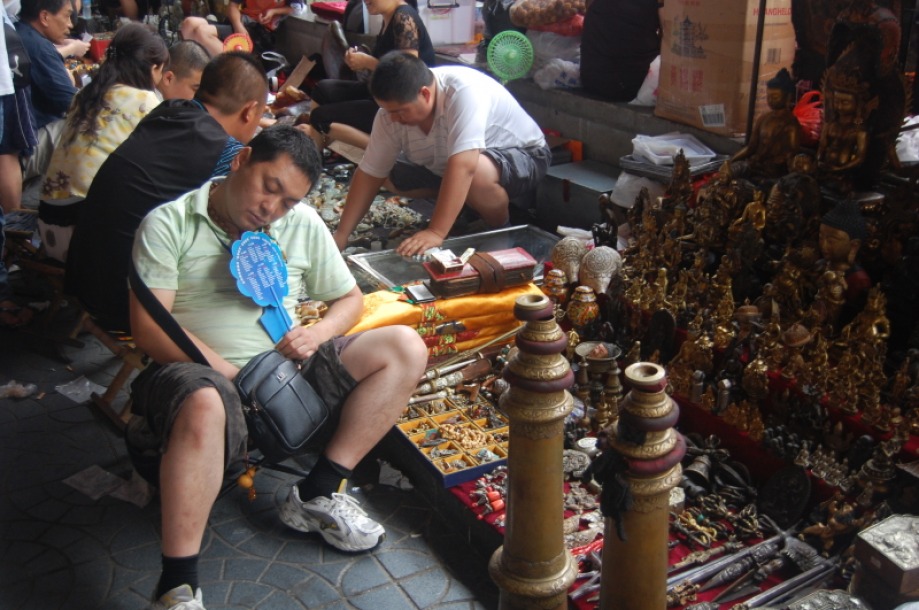
am i obnoxious?
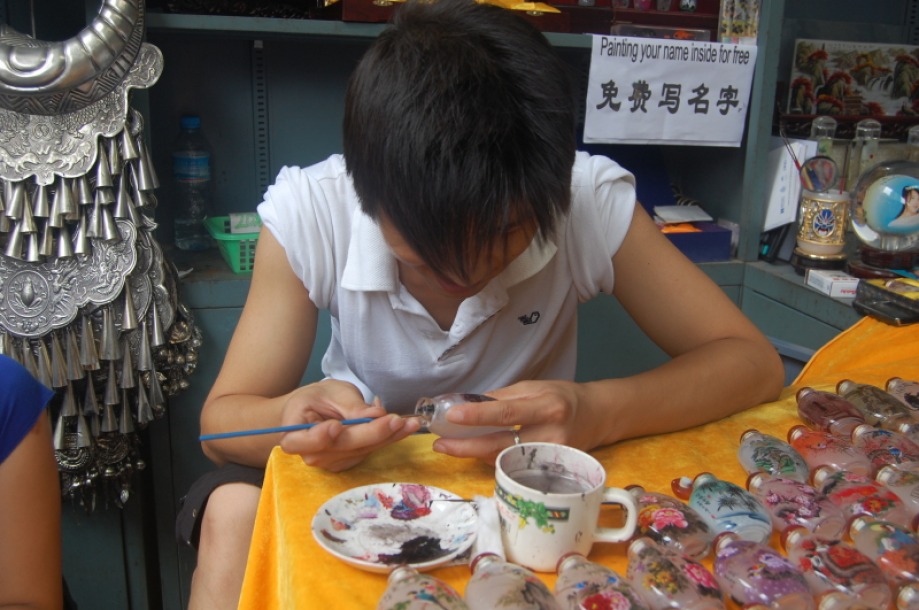
you have to paint these bottles from the inside. since he was awake, i asked permission to take his picture
While walking through the rows of vendors, I thought of the marketplace as a hidden museum. Many of the items seemed old, interesting, significant and/or splendid enough to belong in a museum. If the placement, lighting, and surroundings had been purposeful, and if there had been a plaque explaining their origins, I would have walked past the items more slowly and spent more time observing their details.
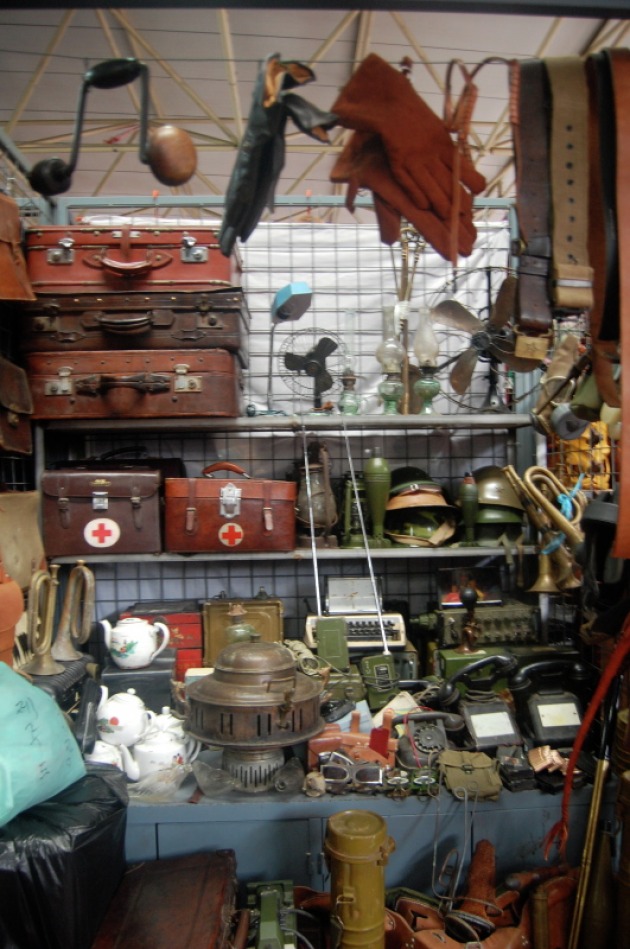
this could have been a display at the China People's Revolution Military Museum
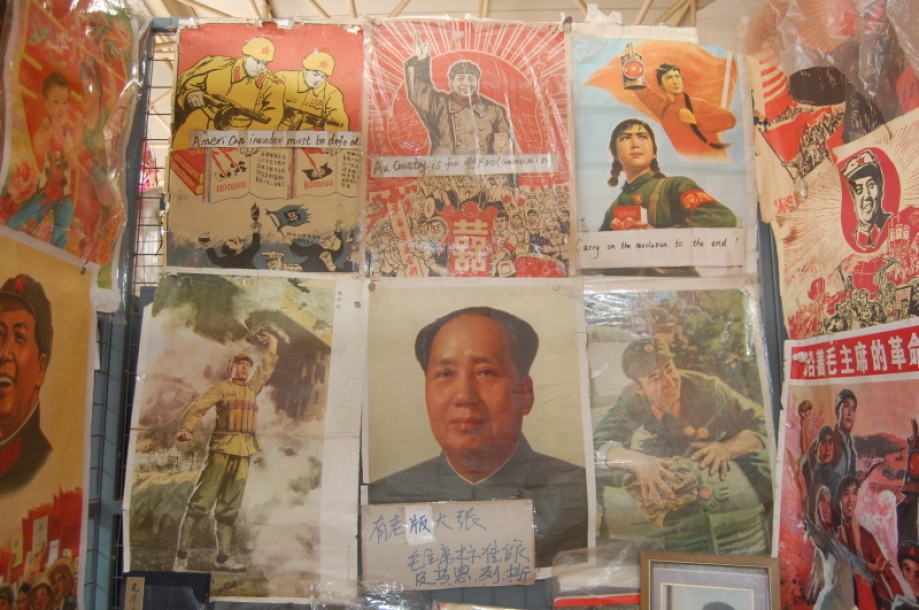
'American invaders must be defeated' 'Carry on the revolution to the end'
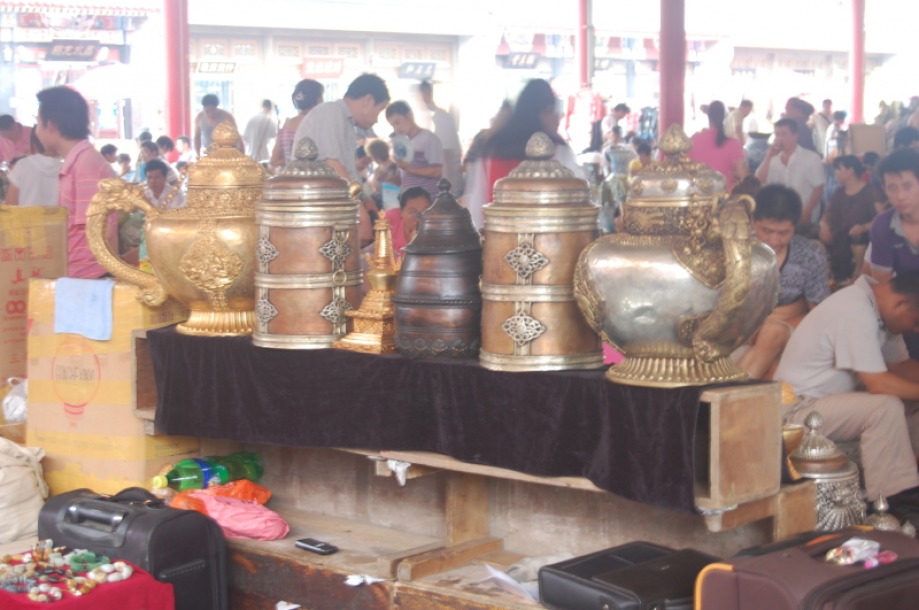
containers
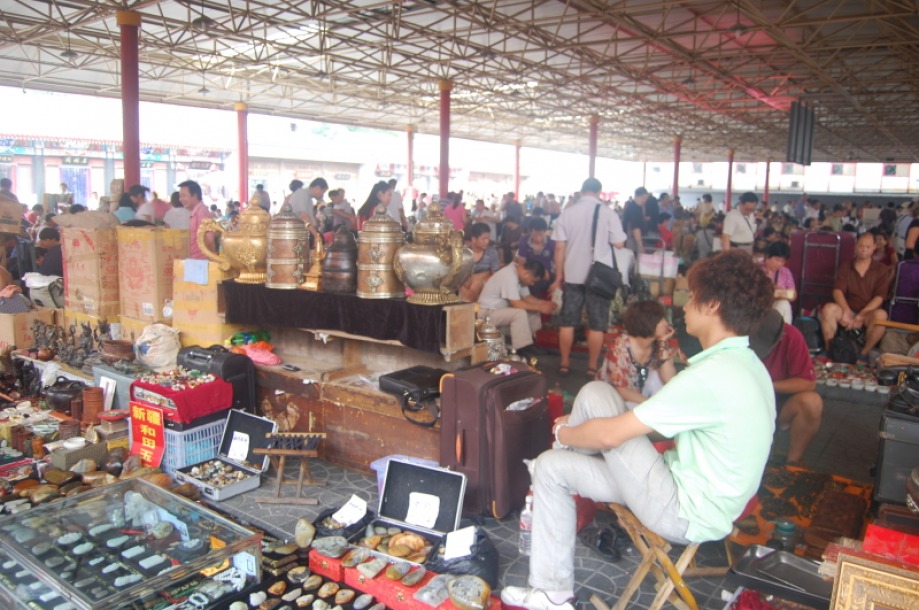
containers in the context of a section of the market
Next, we went to the Temple of Heaven, built in 1420 during the Ming Dynasty by the same emperor who created the Forbidden City. As the Son of Heaven, the emperor would go to the temple three times a year to offer sacrifices to the source of his authority and pray for a good harvest. Bad harvests or natural disasters indicated that Heaven no longer favored the emperor, and thus undermined the emperor's legitimacy.
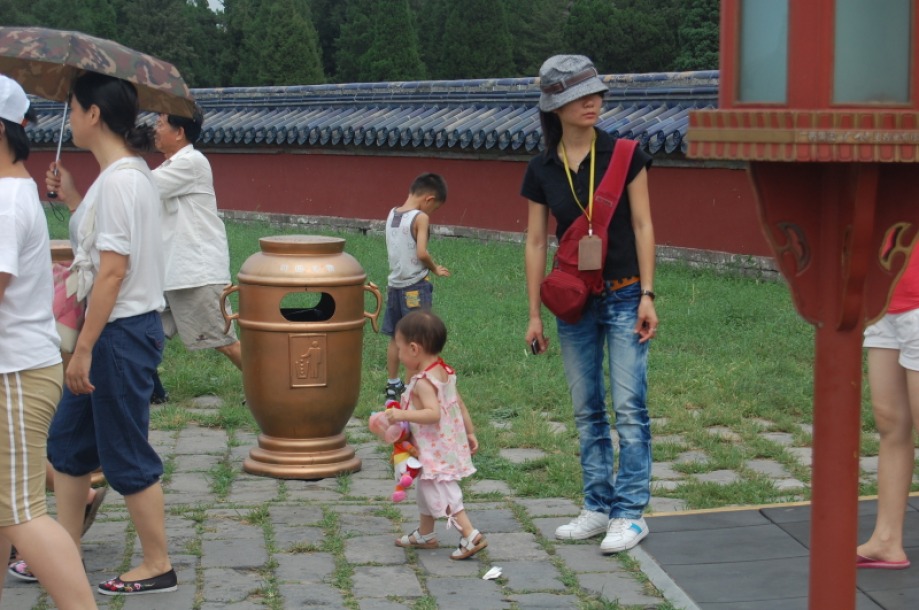
watering the grass. next target: a little boy wearing split pants, preferably while sitting on his parent's shoulders. it will happen.
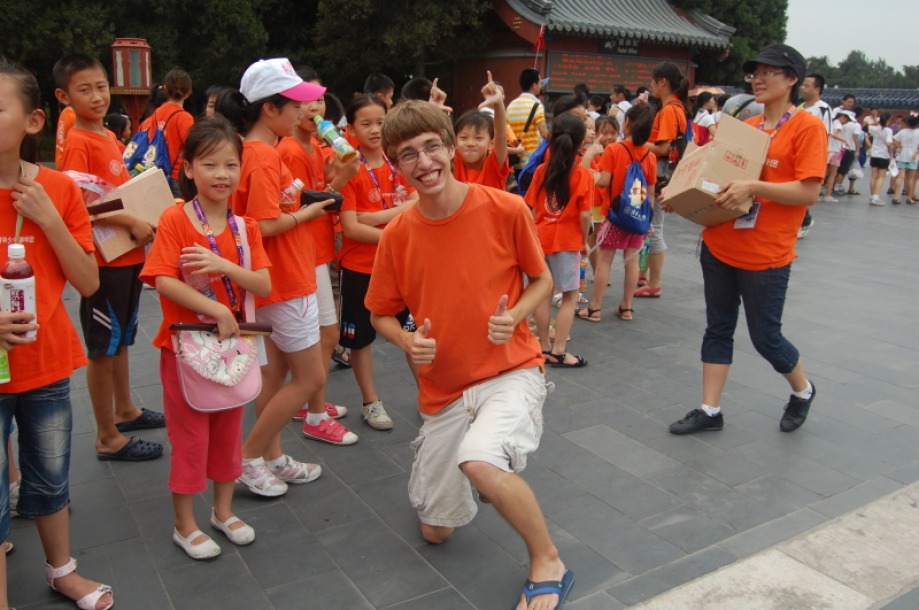
Kevin being freakin' awesome
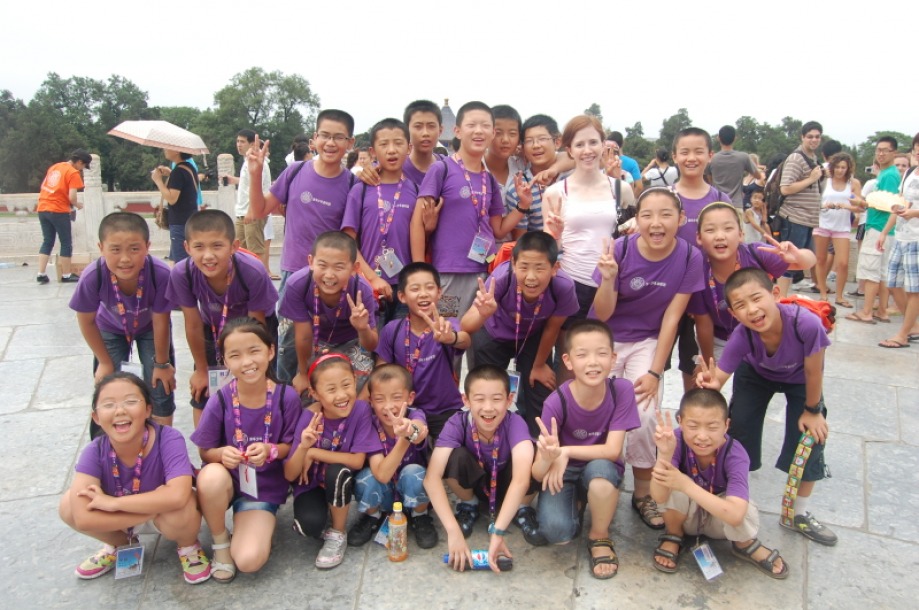
Hilary and her fan club
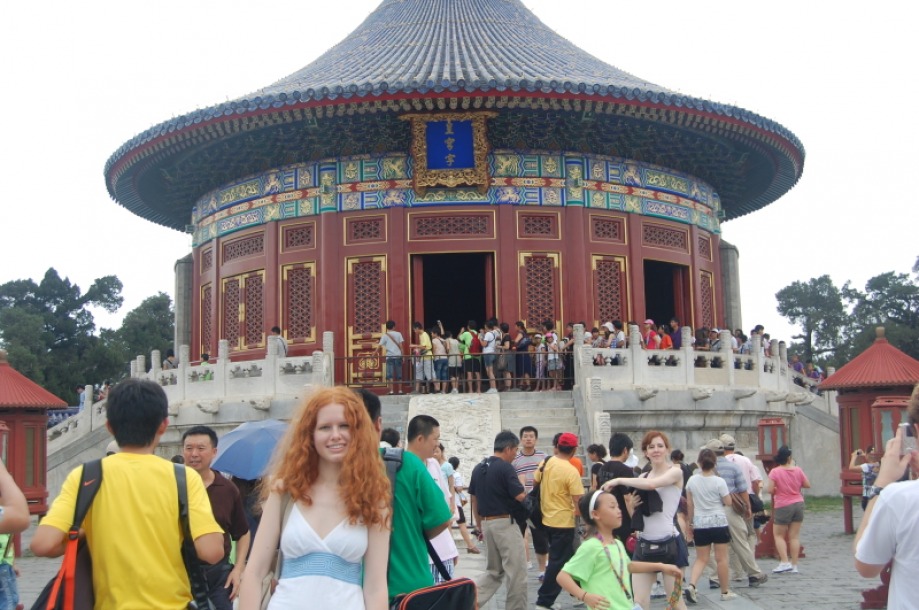
The Imperial Vault of Heaven, built in 1530
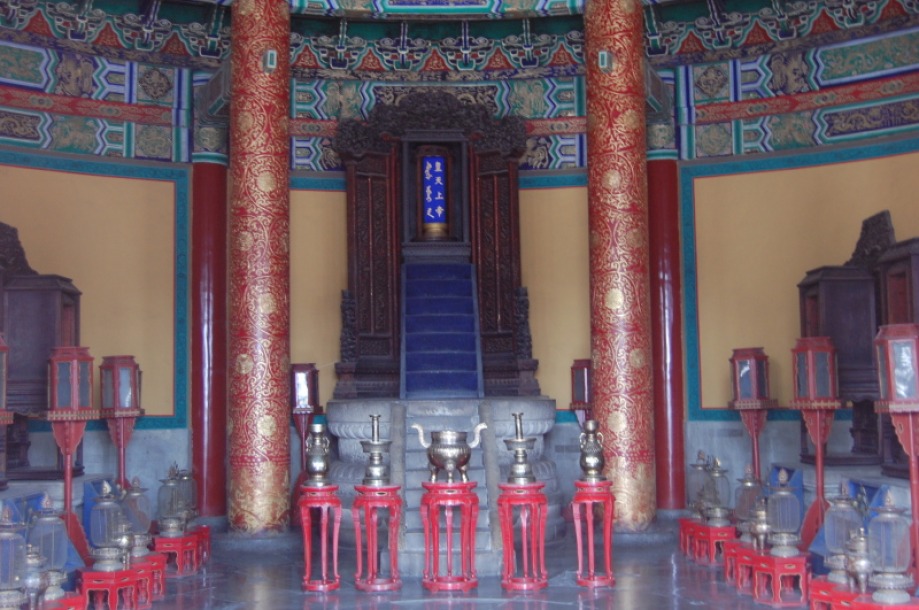
Gods tablets used for worshipping heaven
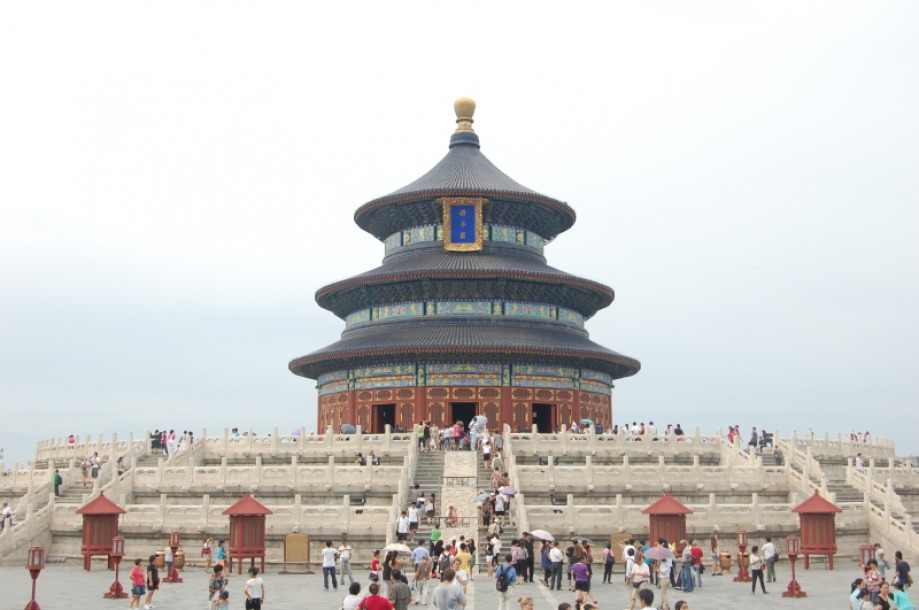
Hall of Prayer for Good Harvest. The blue tiles and circular shape represent heaven
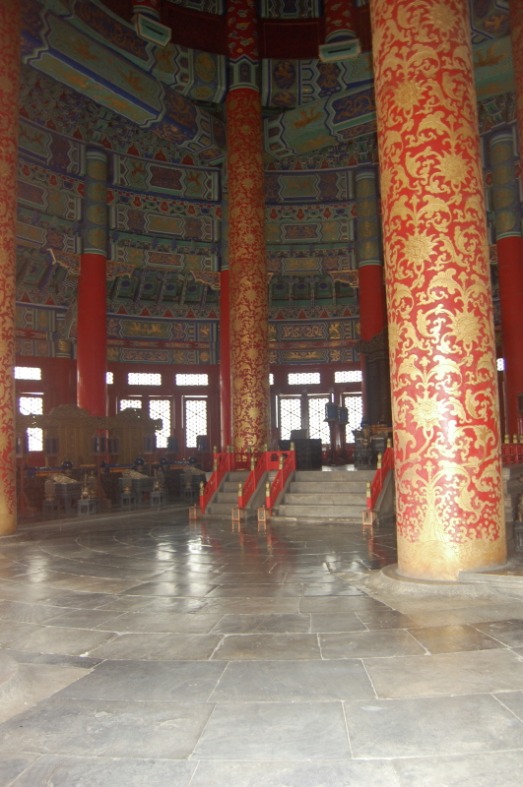
interior. Neither nail nor screw was harmed in making this
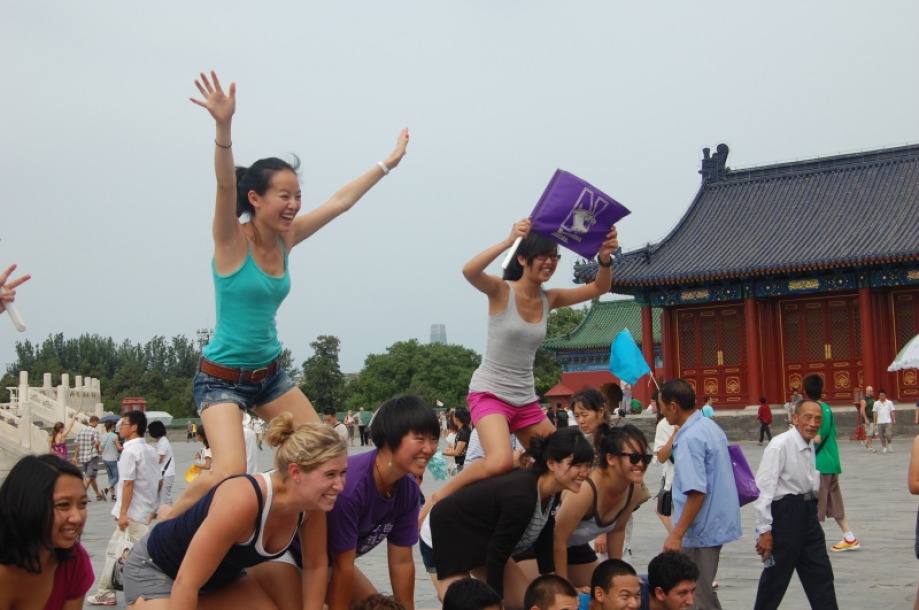
NU
Pearl Market was our third stop of the day. For bargaining, Yashow in Sunlitun is the absolute worst—filled with tourists and stubborn vendors who will not lower their ridiculous prices. Next comes Silk Street, with the most aggressive salespeople who, when you leave their stalls, will yell after you, if not hold onto your arm. Pearl Market was relatively calm, and the pearls there are the cheapest.
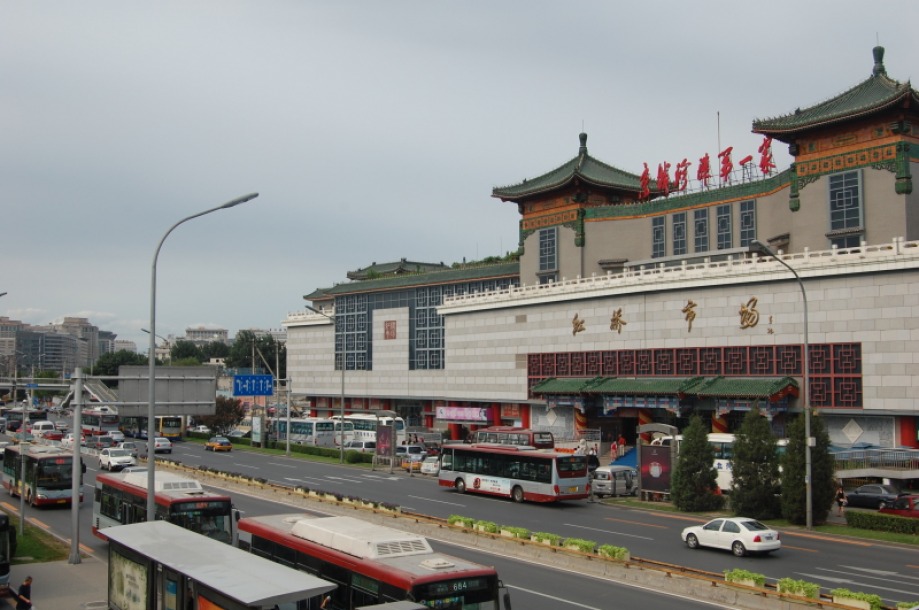
Pearl Market
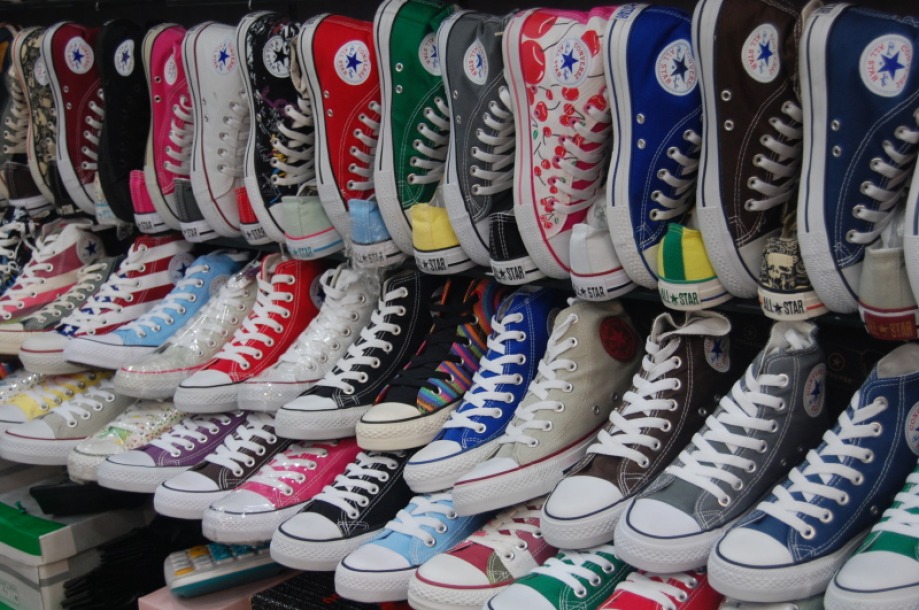
'Converse'
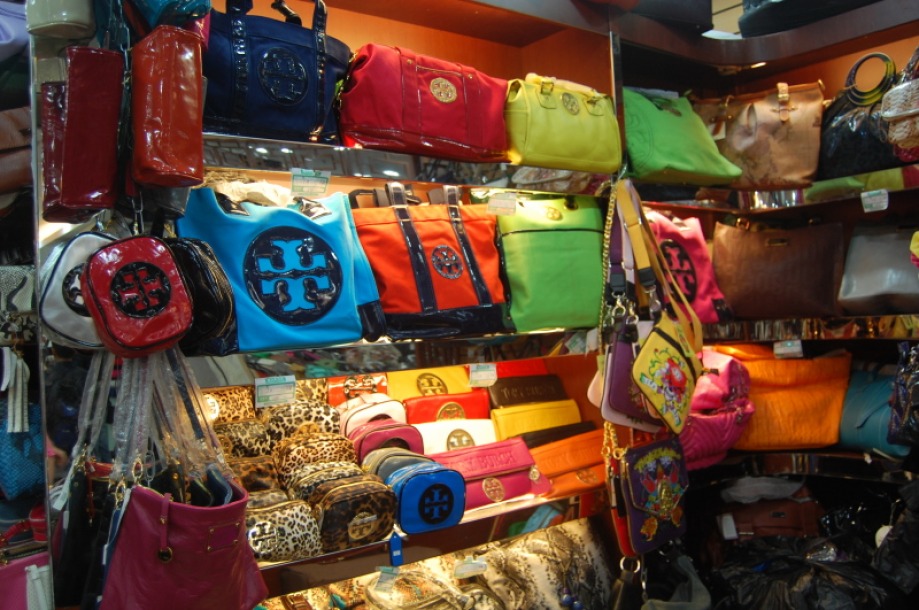
'Tory Burch'
Walking around, I found fakes of Tory Burch, Juicy, and Lesportsac but no stands filled with Louis Vuitton, Gucci, Chanel etc. I stopped for a moment at a counter and immediately the lady pulled out a magazine filled with pictures of Louis Vuitton fakes. First I asked to photograph the magazine, then after being denied asked to see a purse. She said that, of the few she had there, I could see one for a minute at most because of the policeman walking around; he might confiscate her merchandise. From the magazine of fakes you select which bag you want, and then the shop owner retrieves it from his or her house. The police cannot not know about this system, but as we discussed in my economics class, will look the other way. The industry of fakes, while against China’s intellectual property rights, creates jobs and generates revenue. The officials will allow the business to continue, but randomly seize the merchandise to create a disincentive for entry and to ensure that the vendors are subtle about their technically illegal business.
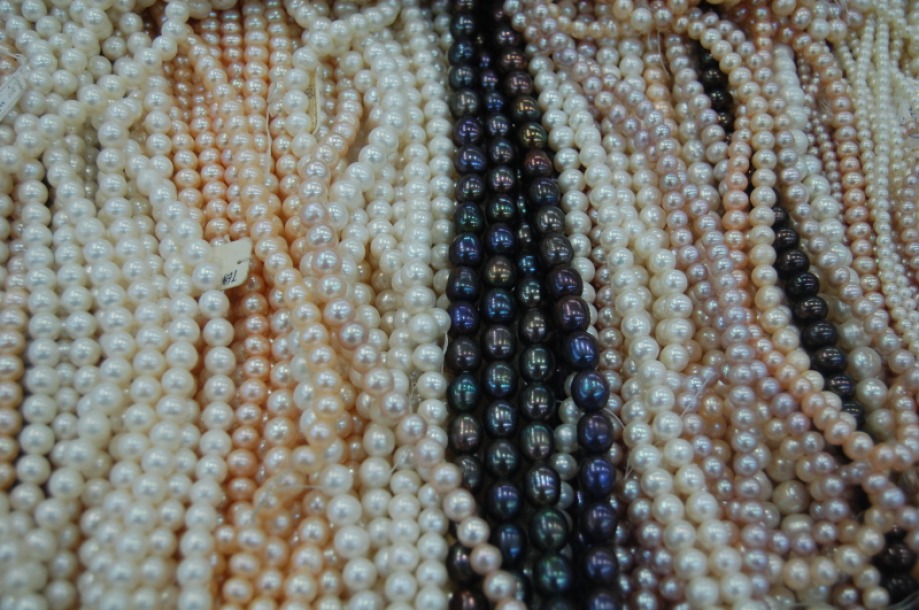
pearls. no quotation marks. these should cost 30 kuai a strand ($4.41)
Finally, we ended the day with an acrobat show. It was actually unbelievable.
Piling thirteen girls on one moving bicycle?
Doing a headstand on another girl’s head, and each girl spinning eight plates whilst balancing? My favorite part was when three towers of two men each—one man standing on the other’s shoulders—juggled three six-year-old girls from one tower to the other. Definitely more thrilling than a rollercoaster.
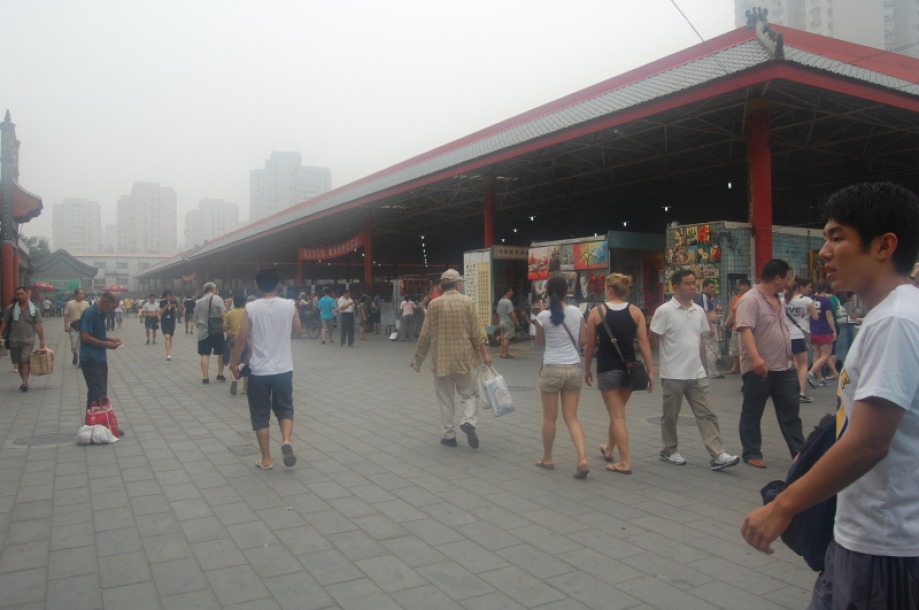






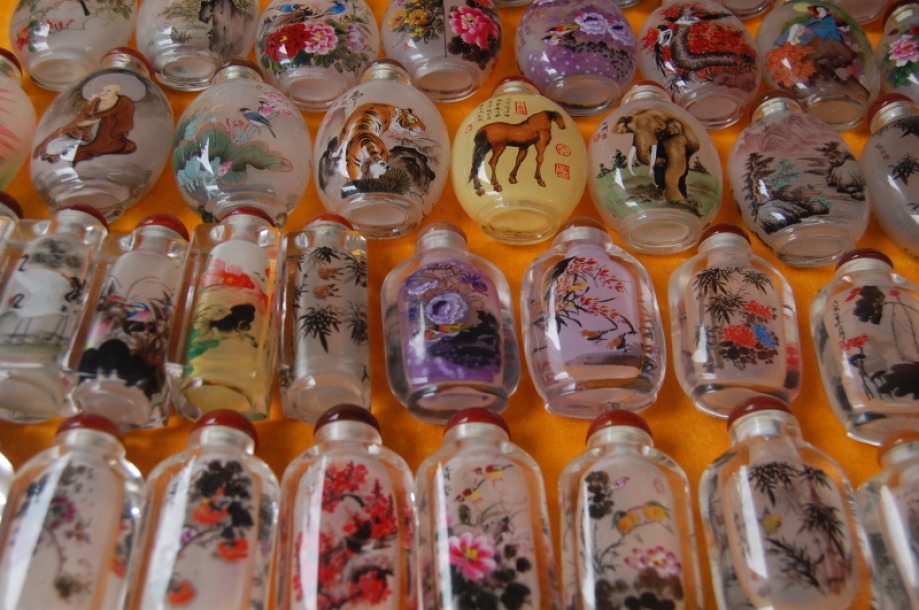















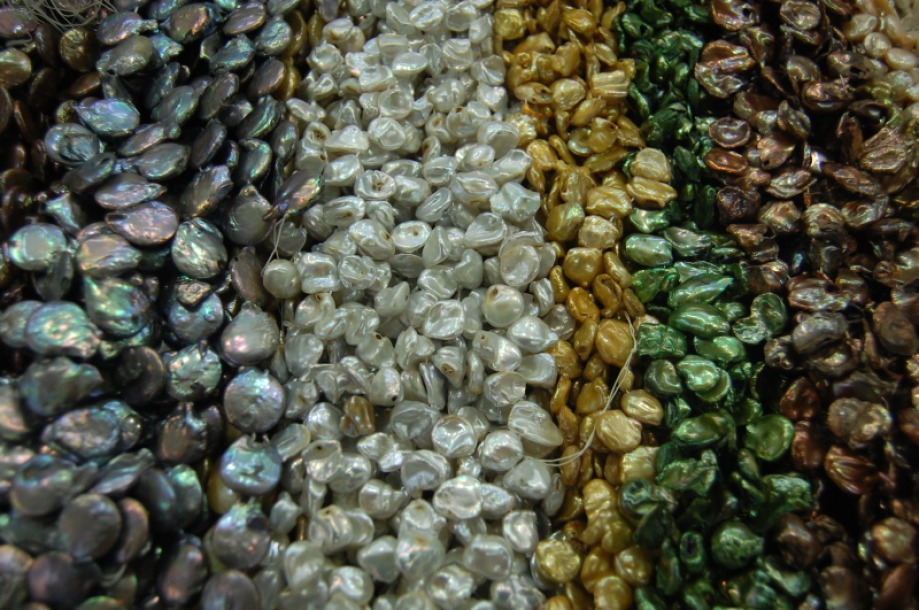

 RSS Feed
RSS Feed